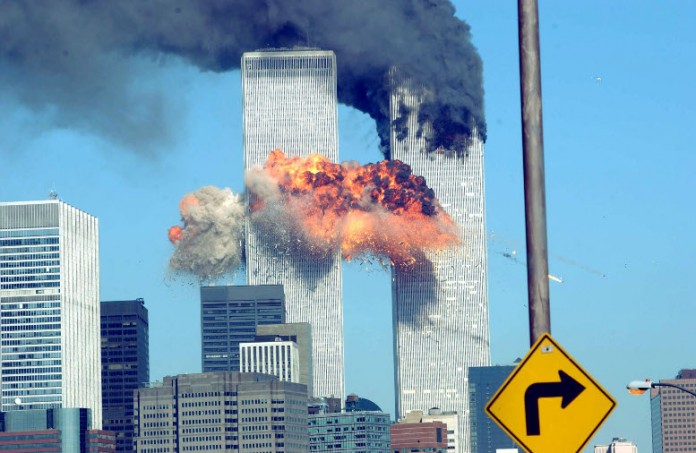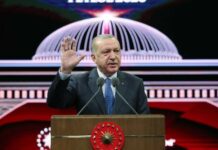
Hillary Clinton recently explained her plan to deal with the Islamic State. “We’ve got to do it with air power,” she declared at NBC’s Commander-in-Chief Forum, adding that “they are not going to get ground troops. We are not putting ground troops into Iraq ever again. And we’re not putting ground troops into Syria. We’re going to defeat ISIS without committing American ground troops.”
If that sounds familiar, it should. It is a perfect description of the “Clinton Doctrine” – President Bill Clinton’s disastrous, failed policy of fighting terrorists from the air.
Why were terrorists emboldened to attack us on 9/11? Because, during Bill Clinton’s eight years in office, they had waged a virtually unimpeded offensive against the United States. On Clinton’s watch, terrorists launched a string of escalating attacks, each one bolder than the last: the first attack on the World Trade Center in 1993; the attack on Khobar Towers in Saudi Arabia three years later; the 1998 bombings of U.S. embassies in Kenya and Tanzania; and the 2000 attack on the USS Cole.
Each of these attacks was carried out with no effective U.S. response. Clinton employed a combination of law enforcement (the arrest of Ramzi Yousef for the World Trade Center bombing) and symbolic, pinprick cruise-missile strikes – firing, in the words of President George W. Bush, “a $2 million missile at a $10 empty tent [to] hit a camel in the butt.” The terrorists were allowed to maintain their haven in Afghanistan, where they planned the 9/11 attacks, which was well underway – including the deployment of some of the hijackers to the United States – before Clinton left office.
When al-Qaida carried out those attacks 15 years ago, it never expected that the United States would send ground forces into Afghanistan to remove the Taliban regime and drive the terrorists from their sanctuary. As I pointed out in my book “Courting Disaster,” when 9/11 mastermind Khalid Sheik Mohammed was captured and asked about his plans for follow-on attacks, he smirked and said: “I’ll tell you everything when I get to New York and see my lawyer.” He thought he would be treated just like his nephew, Ramzi Yousef. When he finally became cooperative, he told his interrogators that al-Qaida had expected the United States to continue the law enforcement approach it had taken under Clinton, which would have given him time to carry out his planned second wave of attacks. Those attacks were disrupted, he said, by the unexpected ferocity of the U.S. response.
Today, the terrorists no longer fear the ferocity of the United States’ response. On taking office, President Barack Obama attempted to revive the Clinton Doctrine – ramping up airstrikes while withdrawing U.S. forces from Iraq and drawing them down dramatically in Afghanistan. The Predator became for Obama what the cruise missile was to Bill Clinton – an easy way to appear as though he was taking tough action against terrorists, when he was in fact following a policy of retreat.
The rise of the Islamic State put a halt to Obama’s retreat, but not before the Islamic State cancer was allowed to grow and metastasize across the globe. According to a recent CNN analysis, since Obama dismissed it as the JV team in 2014, the Islamic State has carried out or inspired 143 attacks in 29 countries outside of Iraq and Syria that have killed 2,043 people and injured thousands. And, as my American Enterprise Institute colleague Danielle Pletka recently pointed out, the al-Qaida network that attacked us on 9/11 still poses a mortal threat. “Al Qaeda is not gone. It is not down. It is not out. It has not been eclipsed,” Pletka writes. “It is biding its time, working, waiting. . . . It will come for us again, and we are not paying attention.”
Indeed, in many ways, the security situation today is far more dangerous than it was before Sept. 11, 2001. Our defenses are better, but the threat is more complex. Before 9/11, we largely faced the danger from one terrorist network (al-Qaida) that had established a haven principally in one nation (Afghanistan). Today, we face danger from two major terrorist networks – the Islamic State and al-Qaeda – who have havens in more than a dozen countries and are competing with each other for the hearts and minds of the jihadi faithful. The way to win that competition is to hit the U.S. homeland first.
Today, as in the 1990s, terrorists emboldened by U.S. weakness have launched a series of escalating attacks – in the French cities of Paris and Nice; in Brussels; in San Bernardino, Calif.; in Orlando – with virtually no consequence. And Hillary Clinton’s proposed response? Double down on her husband’s failed policies and those of his Democratic successor. No ground troops. Airstrikes. Law enforcement.
Bush’s strategy was to fight them over there so that we do not have to face them over here. The Clinton strategy is to fight them from the air so that we do not have to face them on the ground. But as we learned on 9/11, if we fight them from the air alone, we will face them on the ground – American ground.
The Clinton Doctrine failed once. Do we really want to go back?
– – –
Marc A. Thiessen is a fellow with the American Enterprise Institute and former chief speechwriter to President George W. Bush.
Special to The Washington Post · Marc A. Thiessen
{Matzav.com}











Bill: Trump is more sick than hillary
Trump: I wish she gets better
Bill: I have never used an email before
Hill: We communicated via email
Hill: Trump supporters are *deplorables
Trump: Hu?! Which half of my military supporters are you referring to?
Hill: Let’s Fight >>
Trump: Let’s make America great again.
Trump: Winning (CNN/ORC POLL)
Hill: LOSING (CNN POLL)
Trump: Let’s beat the hel* out of ISIS
HILL: Faints
Donald Trump for president 2016